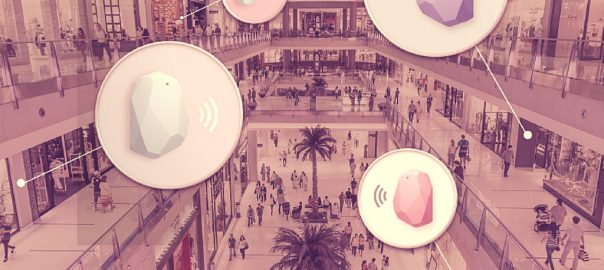Introduction:
Geospatial data, also known as geomatics, is adopted by several industries and technologies for the collection, analysis, processing, and distribution of geographic information.
Most people are familiar with GPS, or Global Positioning Systems, the powerhouse behind our online maps and navigation. Another popular acronym is GIS, or Geographic Information Systems, which is a geographic repository of categorised information.
With evolving times, both these systems contributing to the overarching geospatial navigation system form the backbone of our lives. Everyday, industries ranging from healthcare, retail and finance to critical functionalities such as defense, food and water security, risk assessment and urban development are all dependent on it. Information technology has been instrumental in rapidly expanding its influence in all aspects of our lives.
There are enormous benefits of geospatial navigation in the current world. One can use it to pinpoint the location of their customers, design targeted marketing, predict weather patterns, aid local businesses with inventory stocking and predict areas where vaccines will be most in demand, ensuring their efficient and effective distribution. From a local truck driver to the hospital management, everyone depends on geospatial navigation today.
With recent advances in data mining, information is available faster and in greater quantity than ever before. The widespread adoption of geospatial data has impacted companies and organizations across the globe. The following section is a deep dive on how geospatial data is revolutionising the transportation industry.
The application of Geospatial data:
The first thing that comes to our mind when we travel is navigation and maps. While many among us use it only when we are lost or in a new place, one would be surprised to know how geo-spatial data is reorienting the transportation industry. With more than 155 million people using online maps, it has evolved to become one of those industries through the constantly developing digital maps and navigation systems.
While the overarching use of geospatial data is to primarily give drivers useful information on routes, traffic patterns, distance, etc. This is also extremely useful for businesses in the transportation sector. Eg – logistics, shipping and supply chain. Geospatial data helps to improve delivery schedules to track and expedite shipments. This ensures an increase in efficiency when it comes to the management and delivery of goods, as a result of mapping transit routes and warehouse locations. The overall result being business productivity, customer satisfaction and cost efficiency.
Geospatial navigation system has also paved the way for targeted expansion efforts for effective business growth. All industries can now gain access to information on land use, population density, geography and customer income. This indicates factoring in more parameters that can contribute to business performances due to transportation conditions in a new retail location.
Geospatial navigation opening new vistas in transportation:
Beyond the obvious spectrums of life where GIS has enabled industries to achieve both competence and excellence, it has played a huge role in the day to day transportation space. Geospatial navigation has been useful to oversee and manage complex systems around transportation planning and management with effectiveness. It is instrumental in determining if capacities are to be enhanced, operations strengthened and strategic investments identified, to keep running systems cost-effectively. There are several ways in which GIS is aiding transportation. The major areas of its intervention includes highway maintenance, traffic and route planning and accident analysis.
Traffic modelling:
With the pressure of a growing population, traffic management has become a crisis almost everywhere, primarily in countries with a large urban populace. Most countries struggle with traffic management, especially during the rush hours. However, if used correctly, GIS data can be transformed to bring about large scale traffic simulation. Interactive visualization of virtual roadmaps helps in real time traffic modelling. Hence, they can help with navigating through highways, overpasses, intersections and ramps.
Accident Analysis:
As per the World Health Organization, between 20 and 50 million more people suffer non-fatal injuries, with many incurring a disability as a result of road accidents. Traffic accidents have large scale social, economic and political consequences for the country. With spatial analytics, through GIS, traffic management systems are today able to get a better understanding of the patterns behind these accidents, helping them form an intelligent accident analysis.
Route Planning:
Route planning is an important aspect within transportation. Road blockages and other hurdles can contribute to large scale economic losses. It becomes easy for everyone if people know which road to travel in advance. Since managing modern roadways becomes a complex affair, transportation planners must draw on a wide range of technologies to effectively manage it. This includes computerized traffic control systems, accident and safety management systems and so on. GIS can aid transportation officials to improve operational efficiencies through a responsible route planning system.
Final Thoughts:
The future of mobility is going to be determined by 5 themes – multi-modal, shared, autonomous, connected and electrified. It cites that LI is going to play a vital role in ensuring all 5 areas function at optimum efficiency. Precision in data and technology will be a key determinant to the future of transportation technology. It can effectively transform a vehicle to a thinking and self-operating IoT device.
Location Intelligence or LI is the collection and analysis of geospatial data gathered from different sources. The strategic insights from this data help to solve a variety of business challenges for the transportation industry. This is done by providing access to spatial data, trends, patterns and relationships between vehicles and infrastructure. In this process, GIS becomes a means to an end, which is to shape global businesses, which adds critical context to the decision making process.
Geospatial data is a vast arena that continues to expand. Gone are the days where a team would be sent “on the ground” to investigate a business opportunity. Geospatial data can do all this and more, while providing rich insights that help the decision making. Companies all over the world are utilizing geospatial data in diverse ways. It will be interesting to see how the transportation industry expands using it, to create an even greater impact in the future.
————————————————————————————————————————-
Like other businesses, if you too are looking for geospatial navigation solutions, Mindfire Solutions can be your partner of choice. We have a team of highly skilled and certified software professionals, who have developed many custom transportation and logistics solutions for our global clients over the years.
Here are a few interesting projects we have done. Click here to know more:

